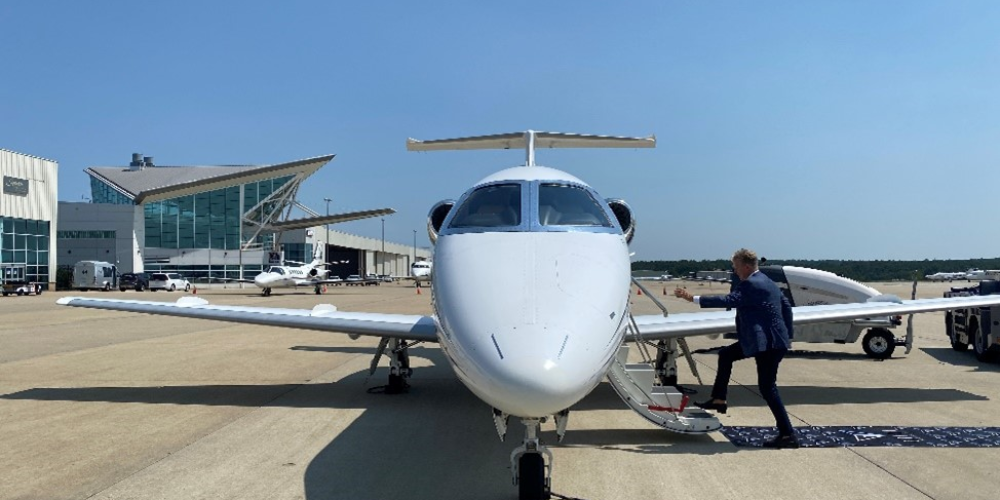The skies are witnessing a significant shift in the preferences of pilots and aviation operators, with turboprop aircraft rapidly ascending in popularity across the globe. This rise in favor is not merely a trend but a reflection of the substantial advantages these aircraft offer over their counterparts. In an industry where efficiency, performance, and cost management are paramount, turboprop planes stand out as a beacon of optimal operational capability. The unique allure of turboprops lies in their ability to marry the agility and accessibility of light aircraft with the robust performance typically associated with larger jets, offering a flying experience that is both exhilarating and practical.
As we delve into the world of turboprop aviation, it becomes clear that the increasing preference for these aircraft is driven by their distinctive features and the tangible benefits they provide to pilots and operators alike. From unparalleled fuel efficiency and impressive takeoff and landing versatility to the comfort and range they offer, turboprops represent a harmonious blend of technology and performance. This exploration into the advantages of turboprop aircraft aims to illuminate the reasons behind their soaring popularity, highlighting how these planes are reshaping the landscape of regional and commuter aviation, cargo transport, and even specialized aerial missions.
At the heart of this shift towards turboprop aircraft is a deeper understanding and appreciation of what defines these machines—their propulsion systems, design characteristics, and how these contribute to their overall performance and efficiency. As the aviation community becomes more attuned to the benefits of turboprops, including their operational cost savings and environmental friendliness, the decision to choose a turboprop becomes as much about economic and ecological considerations as it is about the pure joy of flying.
In this context, the growing popularity of turboprop aircraft in the aviation industry is a narrative of innovation, adaptability, and forward-thinking. As we explore the intricacies of these aircraft, from their technical specifications to their diverse applications, it becomes evident why turboprops are not just maintaining their altitude but soaring to new heights in the preferences of the aviation community.
Understanding Turboprop Aircraft
Turboprop aircraft are distinguished by their propulsion system, which combines the aerodynamic efficiency of propellers with the power of turbine engines. Unlike pure jet engines that eject exhaust gasses to produce thrust, turboprops utilize a turbine engine to drive a propeller, offering a unique blend of speed and fuel efficiency. This design characteristic allows turboprops to excel in scenarios where jets might not be as efficient, particularly in short to medium-range flights.
The heart of a turboprop’s advantage lies in its engine’s operational efficiency. Turboprop engines are designed to deliver optimal performance at flight speeds and altitudes common for regional and commuter aircraft, providing a sweet spot of efficiency where many flights occur. This efficiency translates to significant fuel savings and lower operational costs, particularly over short to medium distances where turboprops outperform their jet counterparts in terms of economy.
Performance And Efficiency
One of the most compelling advantages of turboprop aircraft is their remarkable performance capabilities, especially in terms of takeoff and landing. Turboprops can operate from shorter runways than jets, opening up access to remote airports and enhancing the flexibility of flight operations. This capability makes turboprops an excellent option for regional airlines, cargo carriers, and special mission operations that require versatility in accessing diverse destinations.
Fuel efficiency stands out as another critical benefit. Turboprop aircraft consume less fuel than jets over comparable distances, especially in lower speed ranges. This efficiency not only reduces operating costs but also aligns with growing environmental concerns, offering a more sustainable option for operators keen on minimizing their carbon footprint.
Versatility And Flexibility
The versatility of turboprop aircraft extends beyond their operational performance. These aircraft are engineered to excel in a variety of conditions, from hot and high environments to icy runways, ensuring reliable performance under diverse circumstances. This adaptability makes turboprops suited for a wide range of missions, including passenger and cargo transportation, air ambulance services, and even specialized tasks such as surveillance and maritime patrol.
Moreover, the cabin space in turboprop aircraft is often comparable to that of larger jets, providing passengers with comfort without compromising the aircraft’s efficiency and performance. The ability to customize interiors for different roles further underscores the flexibility of turboprops, catering to specific operator needs whether for luxury travel, utility, or specialized equipment accommodation.
Cost-Effectiveness And Reliability
Turboprop aircraft not only offer operational advantages but also present a cost-effective solution for operators. Lower acquisition and operating costs, combined with high reliability, make turboprops an attractive investment. Their maintenance requirements are generally less complex than those of jet engines, contributing to lower overall upkeep costs and fewer downtimes.
The reliability of turboprop engines, developed and refined over decades, ensures operators can count on consistent performance with fewer unexpected maintenance issues. This reliability, paired with cost savings, positions turboprop aircraft as a practical choice for operators looking to maximize efficiency and minimize expenses.
Conclusion
The growing popularity of turboprop aircraft in the aviation industry is a testament to their unmatched blend of efficiency, performance, versatility, and cost-effectiveness. As operators continue to seek out aircraft that offer a favorable balance of features, turboprops stand out as a strategic choice capable of meeting a wide array of aviation needs.
For those considering the acquisition or management of a turboprop aircraft, partnering with a knowledgeable and experienced advisor like GO Air Brokerage can provide invaluable guidance. With expertise in the aviation market and a commitment to client satisfaction, GO Air Brokerage is equipped to assist with all aspects of aircraft acquisition and management, ensuring operators can leverage the full advantages of turboprop ownership.
As turboprop aircraft continue to soar in popularity, their role in shaping the future of aviation becomes increasingly clear. Whether for regional transportation, cargo operations, or specialized missions, the advantages of turboprop aircraft make them a soaring choice for the modern aviator. GO Air Brokerage stands ready to guide clients through the intricacies of the turboprop market, ensuring a seamless and informed aircraft acquisition journey.

